7151 Strong Street
Slovak Home, Michael’s Hideaway, Cavalier Lounge, Promise Land Missionary Baptist Church

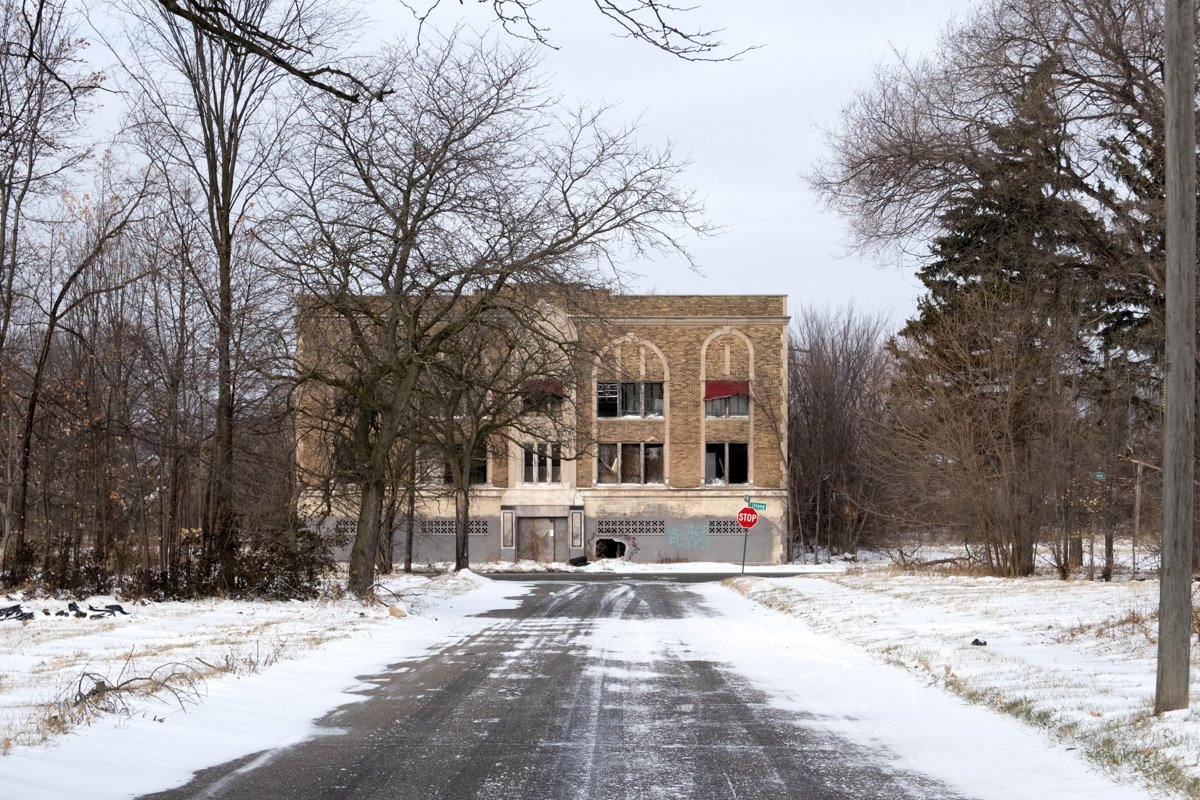
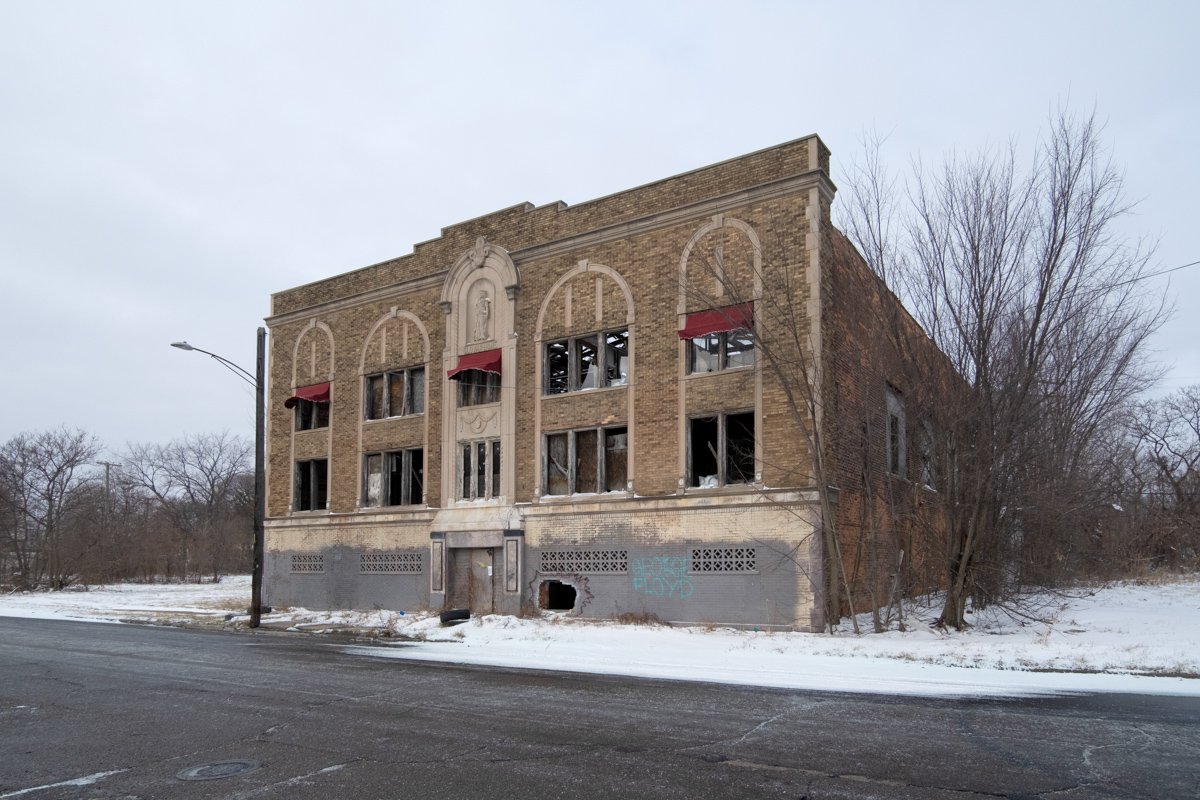
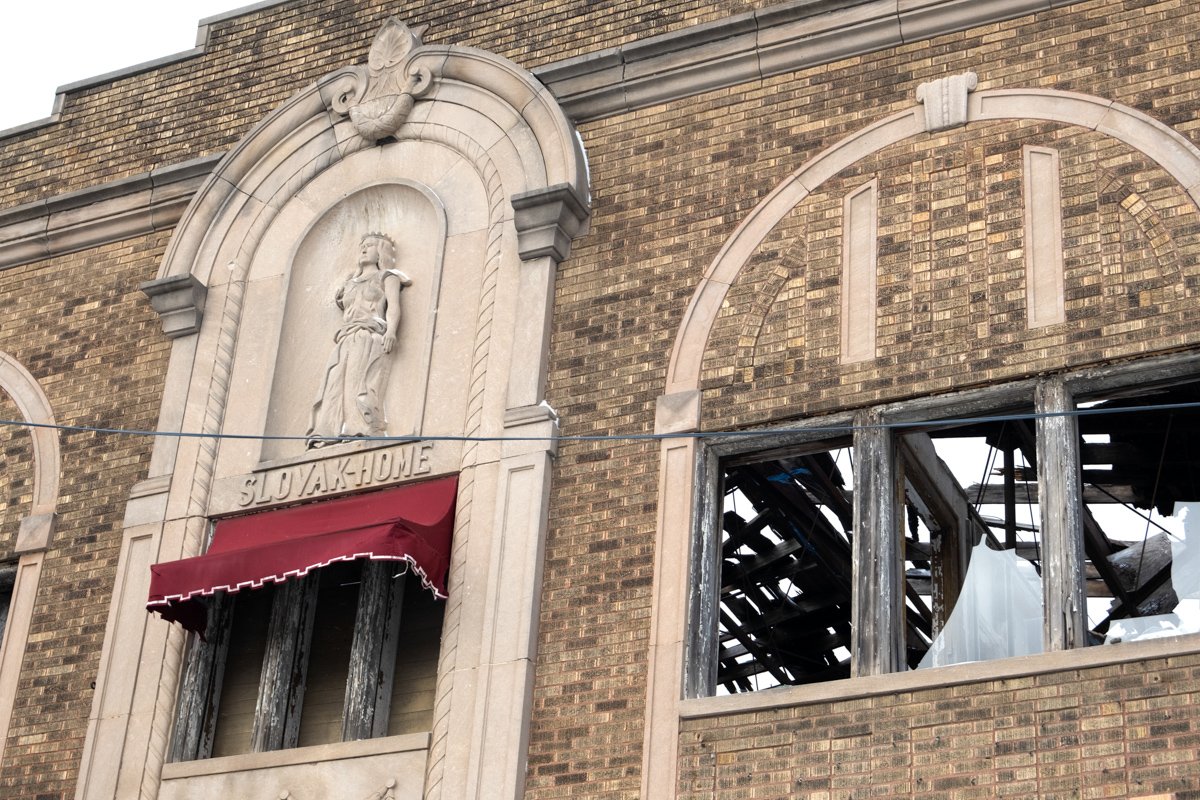


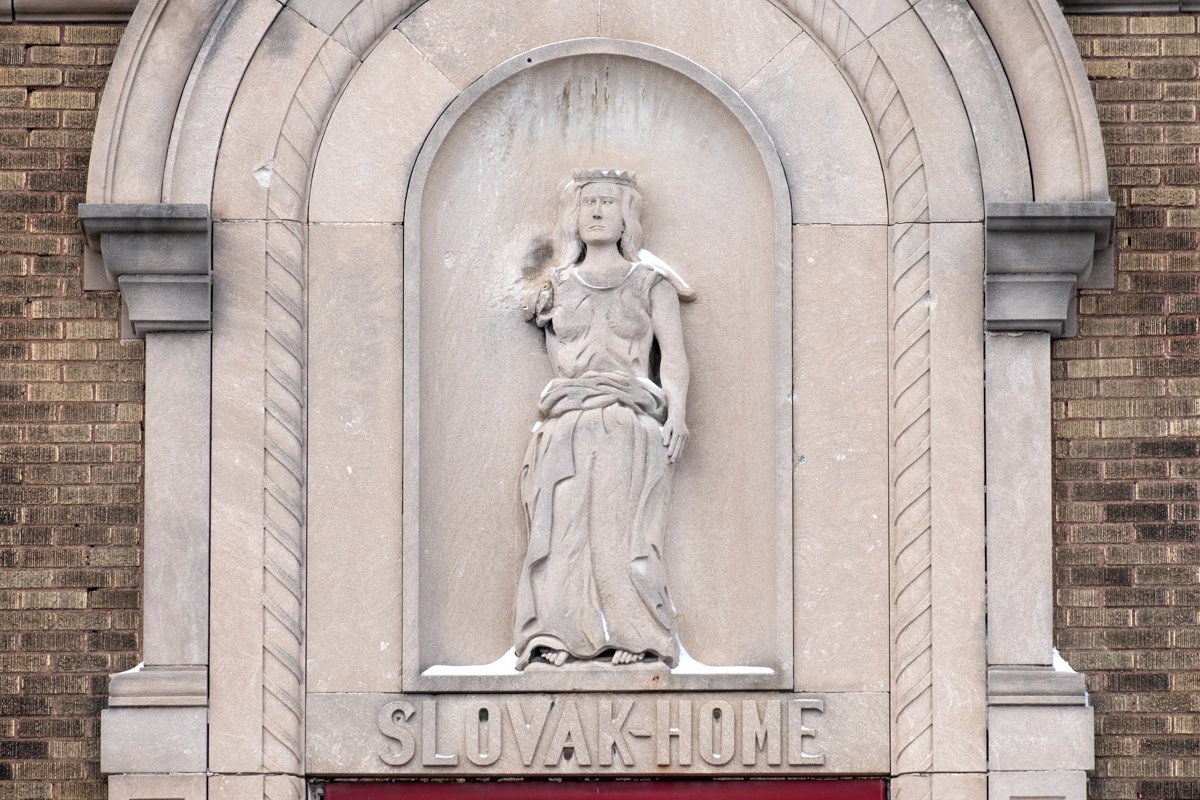
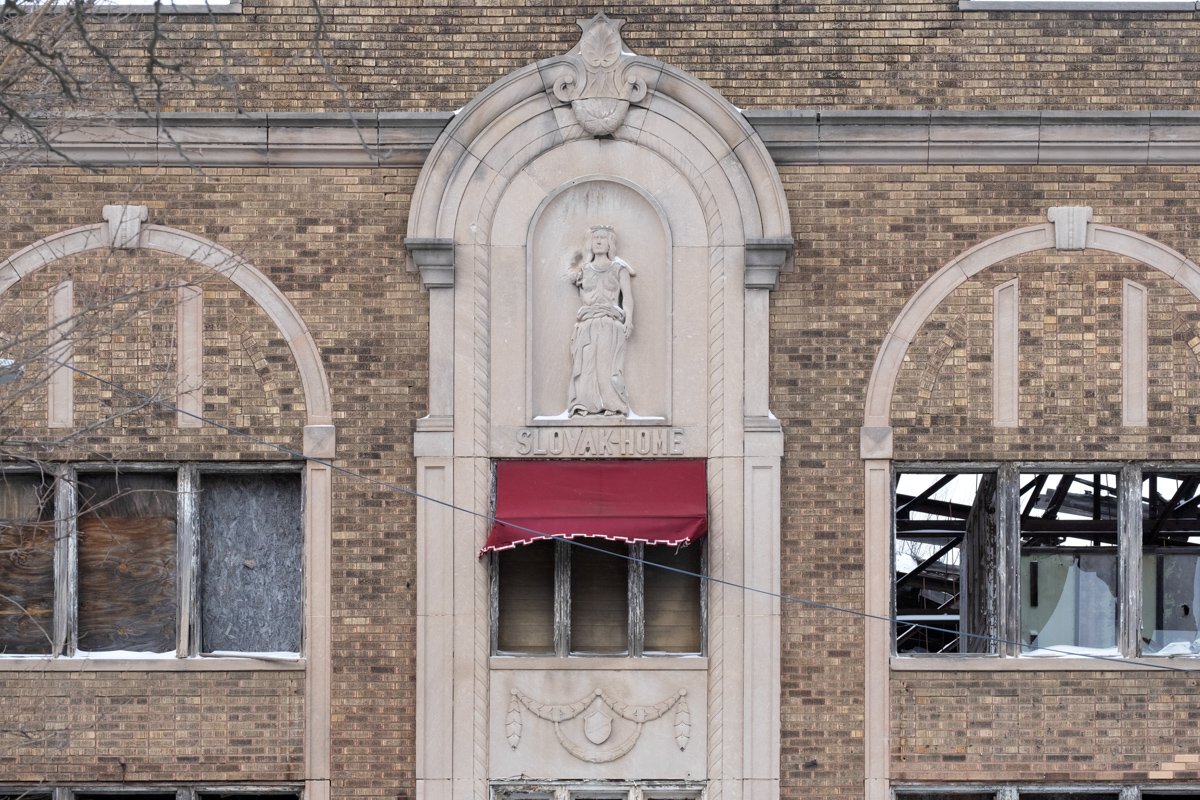
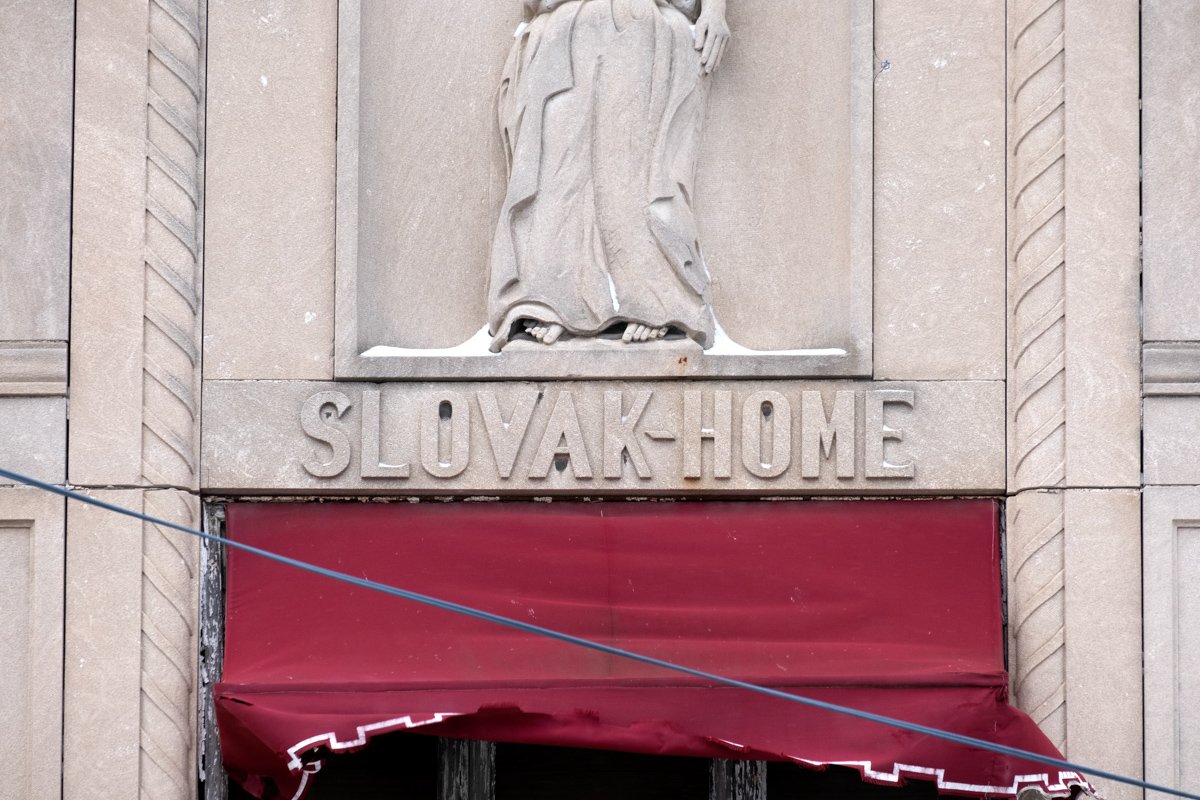
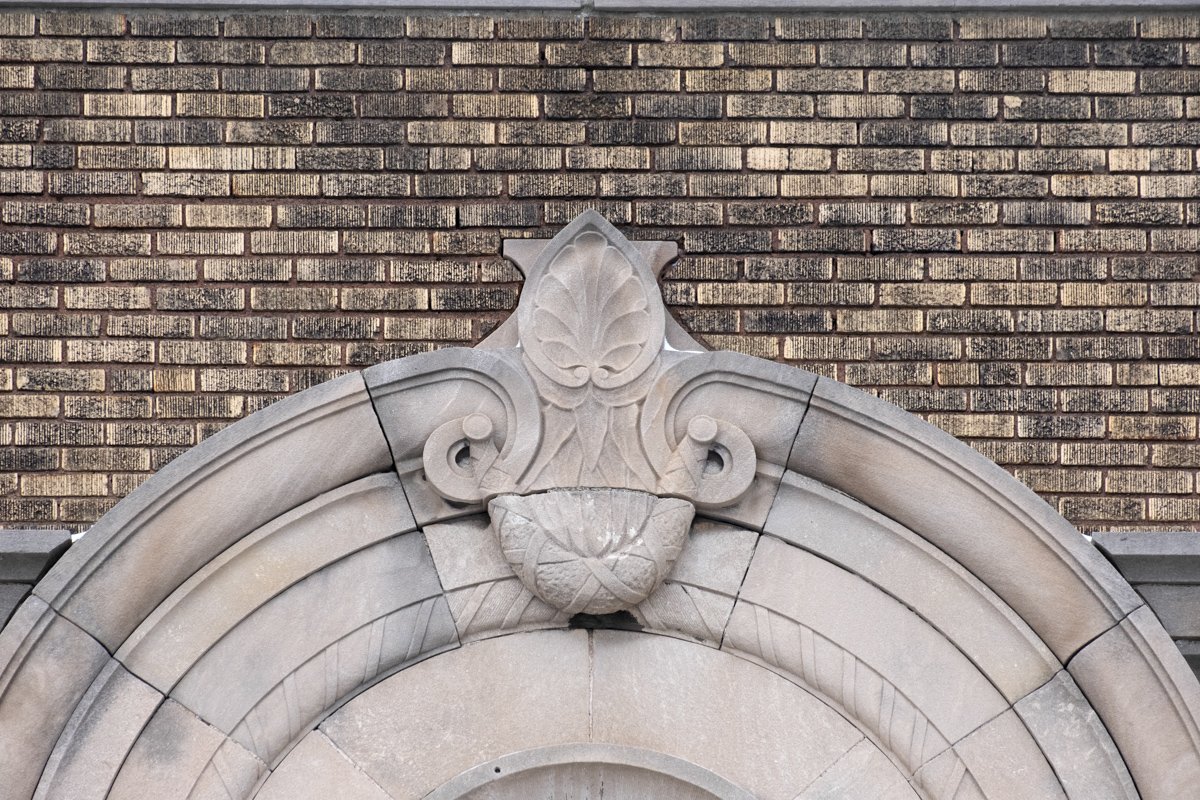

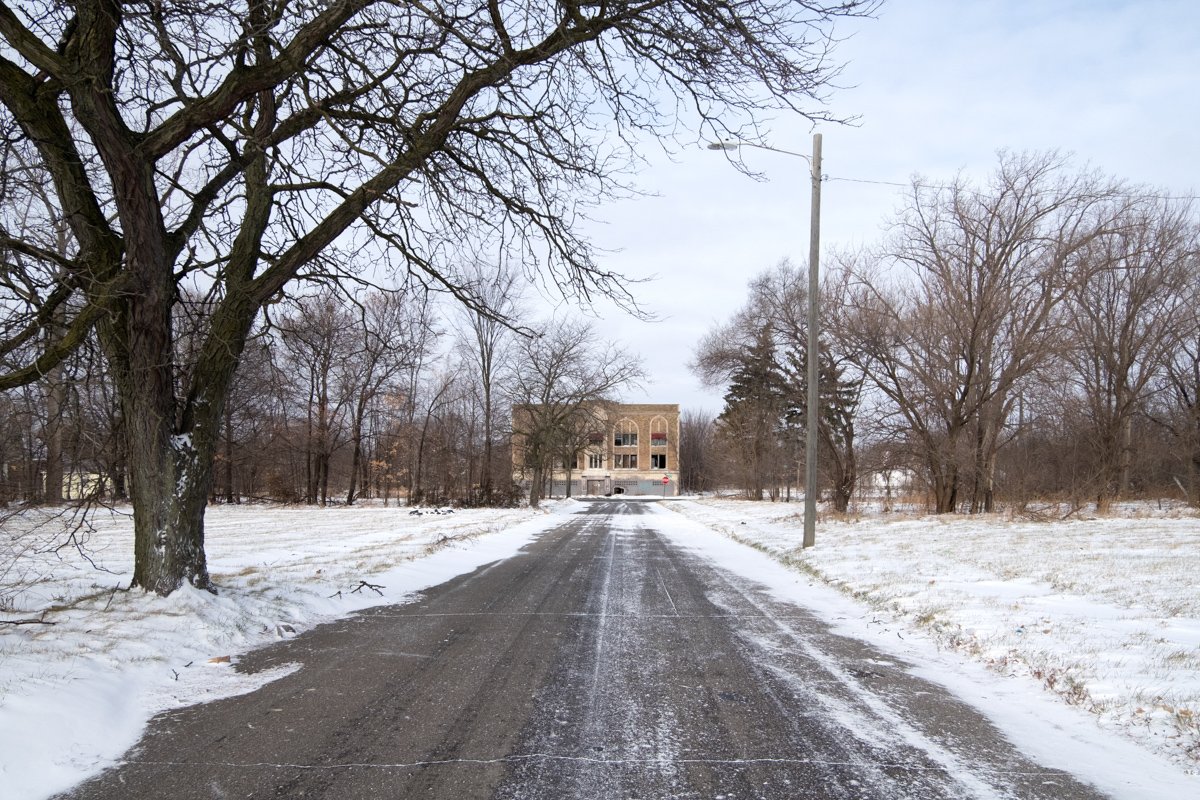
When I took this photograph, my phone said it was -22 degrees with the wind chill. My stubbornness can be literally painful at times, but I’m happy to have documented this structure before its imminent date with the wrecking ball.
I don’t usually do this, but this building poses an immediate threat to anyone who goes inside it, so I feel a warning is necessary. Do not enter this structure. It is not safe.
The Slovak Home at 7151 Strong Street was built between 1922 and 1923 and was designed by Peter R. Rossello. It was built to serve a large number of Slovak immigrants from Hungary, Czechoslovakia, and other nearby countries.
The structure featured a large banquet room with a dance floor and stage used as an auditorium at times. There were first-floor retail spaces, a bowling alley, theatre productions put on upstairs, and parades would start and end at the building. It was the epicenter for Slovaks in Detroit and would be for decades.
In the 1930s and 1940s, the Veterans of Foreign Wars Eddie Stinson Post resided within the building. There were frequent meetings and services available for veterans.
Around that same time frame, the UAW hosted frequent meetings at 7151 Strong and may have had a permanent space here. In 1937, they hosted a meeting for workers at the Packard Motor Company. There was to be a vote at the plant to see whether the UAW had a majority membership with workers—giving them chief bargaining rights at the plant a short walk away from the Slovak Home. It also hosted meetings for the Midland Steel and R. C. Mahon Steel Company unions.
In 1939, there was an advertisement for the Slovak Home Association. The building at 7151 Strong was available to rent for parties, banquets, and weddings.
By 1946, Michael Melovic was operating a bar on the first floor. He made the paper that year when a patron of the establishment shot him. He survived.
In 1949, Melovic was in the news again. The Detroit Free Press reported that a group of 40 youth “brought whisky into the hall and created disturbances in every part of the building” on New Year’s Eve. He said that they were members of the Harper-Van Dyke Gang. Ten of the 40 who crashed the party were convicted of disorderly conduct. Three with previous records got $25 fines, and the rest were fined $15. There was a scathing article in the Free Press a few days later stating that Judge Scallen went too easy on the group and that such light punishments only encouraged more debauchery.
In December 1950, there was a fire in the boiler room in the basement. The fire quickly burnt through decorations that had been put up for a New Year’s Eve party in the dance hall, and the roof was severely damaged. Nobody was hurt, and there was still a bar and bowling alley in the structure at the time of the fire.
In February 1960, the National Slovak Society held its 70th-anniversary party with a concert and dancing at the Slovak Home.
In 1961, there was an advertisement in the Detroit Free Press for the bowling alley. Leagues were forming, indicating a still intact neighborhood.
August of 1962 brought the grand opening for Michael’s Hideaway on the main floor of Slovak Home. The establishment offered dancing from 9 PM until 2 AM, and the first event featured the Swinging Cornell Sisters and comedy by Bernie La Plante.
By 1966, it was called the Cavalier Lounge and offered live music Wednesday through Sunday. That same year, the hall hosted a testimonial for Wayne County Sheriff Peter L. Buback. This is the last instance I’ve found of the hall being rented out and still called anything related to Slovak heritage.
In 1990, Promise Land Missionary Baptist Church moved into the building. The church was incorporated in 1986 at 5261 Dubois by Reverend Melvin L. Williams. I’m not sure how they used the property or whether they rented out spaces to anyone else. Some of their signage is still on the facade of the structure.
Promise Land had numerous outreach programs, including soup kitchens, warming centers, and camps for homeless youth. In 1994, they received government funding for a shelter that assisted homeless men across Detroit at 7151 Strong.
In November of that year, a bad storm hit Detroit. The Detroit Free Press reported that “heavy winds damaged the roof of a church on Detroit’s east side, forcing church leaders to relocate 52 homeless men who were sheltered there.“ They were temporarily housed at Promise Land Community Center at Medbury and Dubois, where they ran a similar program for women and children.
I’m not certain, but I believe this was when the building was vacated. In 1995, Promise Land purchased the former St. Stanislaus Bishop and Martyr Roman Catholic Church. They occupied that structure for 17 years before losing it to foreclosure. In their time at St. Stanny’s, they sold off many ornate details inside, even though the building was listed on the National Register of Historic Places, to keep the lights on. After foreclosure, their address changed to 7045 Curtis Street, home to Bailey Cathedral Church of God in Christ.
According to online records, the building is owned by Whosoever Will Let Them Come, a non-profit incorporated in 2001. These records often have incorrect details, but they show that the structure was last sold in 1990, which is when Promise Land moved its address there.
Whosoever Will Let Them Come incorporated with the intent to offer daycare, soup kitchen, and counseling services.
Regardless of the details of who currently owns it and their past intent, today, 7151 Strong Street is in treacherous disarray. The roof is all but gone, there are huge holes in the second floor, and portions of the main floor are caving in. I would guess that the roof was never repaired after the wind damage in 1994.
Oddly enough, the red awnings were added to the structure around 2010. I can’t figure out why, as the building had been boarded up for at least a half-decade prior. The building became a popular place for graffiti artists and was donned with the names ‘Breonna [Taylor]’ and ‘George Floyd’ in 2020. Later that year, someone smashed a large hole in the front of the building. It looks like they took to it with a sledgehammer—or perhaps the front bumper of a car.
The Slovak Home is a reminder of an ethnic group that has all but evaporated from the neighborhood. St. Cyril and Methodius, the first Slovak Catholic Church in Detroit and a short trip from this building, was vacated in the late 1980s and demolished in 2003 after a few years of use by another congregation. The fact that 7151 Strong has lasted this long is a testament to the build quality of structures like this.
Unfortunately, I can’t imagine it’ll last much longer.
